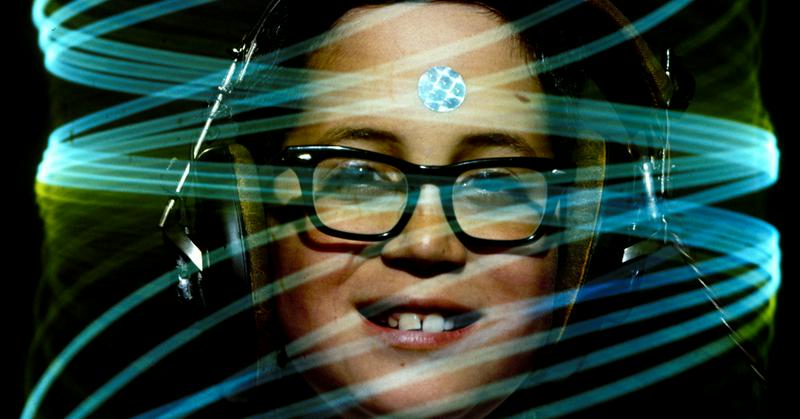Nerds On Acid: The Internet's Founders Did LSD In The 1960s
By | January 15, 2020

The internet: part useful resource, part LSD trip. For all its "information superhighway" rhetoric, the 'net is just as often used to binge cat videos, listen to people chewing ice, or zone out to extremely satisfying but useless clips of things being made. This shouldn't be surprising given that the internet and our everyday computer tech grew by leaps and bounds during the psychedelic era. People were tuning in, turning on, and dropping out - including the burgeoning Silicon Valley sect made up of students and computer scientists living in Northern California. While we tend to think of hippies and dropouts taking psychedelics to get high out of their mind before running through muddy fields barefoot and blasting the Grateful Dead, there was also a large contingent of young men and women who used LSD as a way to get in touch with themselves and nature while thinking of ways to make the future a better place. The internet, iPhones, and all of that beautiful email that you love so much wouldn't be possible without Silicon Valley's wonderboys expanding their minds.
Stanford computer scientists were experimenting with LSD throughout the '60s

How do you take psychedelics correctly? Is there a right or a wrong way to handle it? Should you just dive right in or take it in small doses until you’ve found the perfect amount to feed your brain? That’s what computer scientists in Palo Alto were trying to figure out in the early 1960s.
The Palo Alto experiments of the 1960s saw the young scientists testing the ways in which LSD allowed them expand their consciousness and further understand the new systems they were creating. Many of the scientists found that once they altered their sense of reality, they were no longer deterred by what they’d been told was impossible.
One Silicon Valley CEO wanted his employees to open their minds

In order to inspire his employees to go full universe brain and figure out ways to make their business better a former CEO of Ampex encouraged his employees to dose themselves with LSD. The company’s board members weren’t crazy about that, and they were even less enthused with the fact that the CEO took a group of seven or eight subordinates on a hike where they were fed the hallucinogen anyway. The CEO was fired but his mark was made.
The word got out about the positive uses of LSD amongst the computer scientists of Palo Alto and between 1961 and 1965 hundreds of people underwent their own brand of personal research. One of those scientists was Douglas Engelbart, father of the computer mouse. Thanks to LSD we can move our cursors around all we want. That’s not the only invention that came out these experiments. At the same time as Engelbart was expanding his consciousness computer scientists across the area were figuring out ways to send messages to one another via computers (email, heard of it?) and creating wiki pages to easily share information. Who knew using the web could be so trippy?
The International Foundation for Advanced Study dosed hundreds of engineers

It turns out that we have Ampex to thank for mind expanding use of psychedelics; not only did their former CEO take his employees on a mind expanding hike but employee Myron Stolaroff set up the International Foundation for Advanced Study to methodically study the use of LSD and the like. Stolaroff dosed hundreds of engineers and kept them under constant observation as they went on with their trip. Stolaroff found that 83 percent of his first 152 volunteers had “lasting effects from the experience.” Many of the engineers felt an increase in self-esteem and 78 percent of the engineers found that they were more capable of feeling love.
Steve Jobs said that LSD was a mind opening experience

Psychedelics were so influential throughout the 1960s and ‘70s that even Steve Jobs was trying them out. He didn’t just dip his toe into LSD but he used the drug to change his creative process. Rather than approach things methodically he was able to look at problems from all new angles, some foreign to this plane of existence. Long after he cemented his legacy with Apple Computers, Jobs said that taking LSD was one of the most enlightening experiences in his life, allowing him to be a creative force who understood what people wanted. Do you think he kept extra tabs inside his turtleneck?
The LSD experiments of Palo Alto inspired some researchers to leave California

Not every young person who spent the ‘60s in a haze of psychedelics and research stuck around. Stewart Brand, a biology student at Stanford in the 1960s, participated in a government study of LSD at Menlo Park. Brand explained that after getting into psychedelics he was inspired to start seeing the world:
The hippie phenomenon was to go and discover how the world works, so all the kids went out with backpacks doing the same thing. And we learned a lot.
Brand visited Native American reservations to research their experiences with peyote before joining up with Ken Kesey and pushing himself as far as he could while taking acid. He explained to The Guardian:
Weird sh*t would be tried… Can you make it through the night without being killed or killing anybody?
